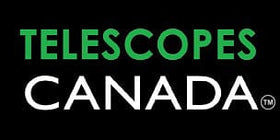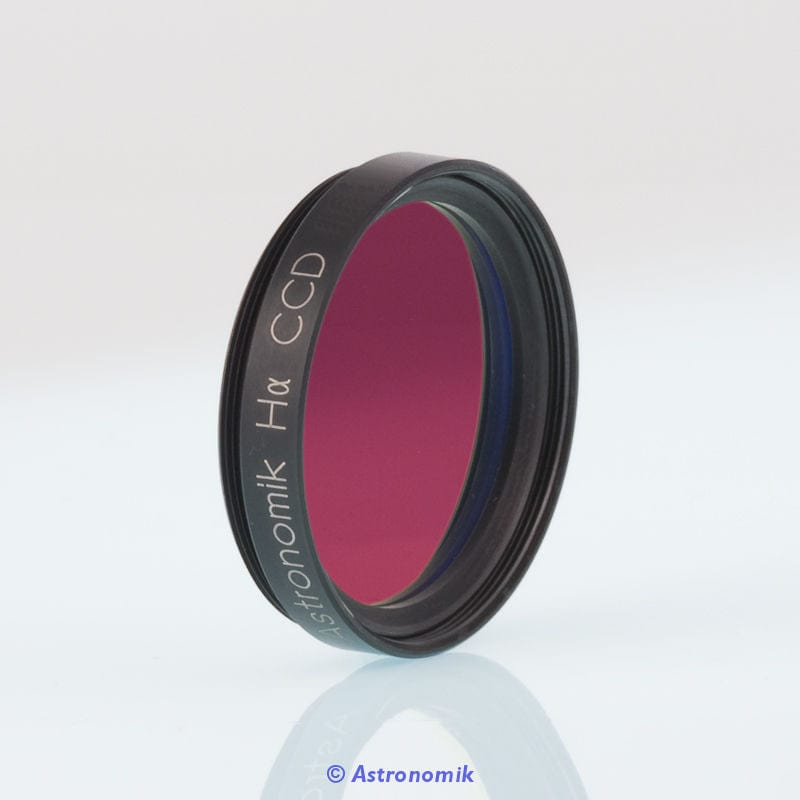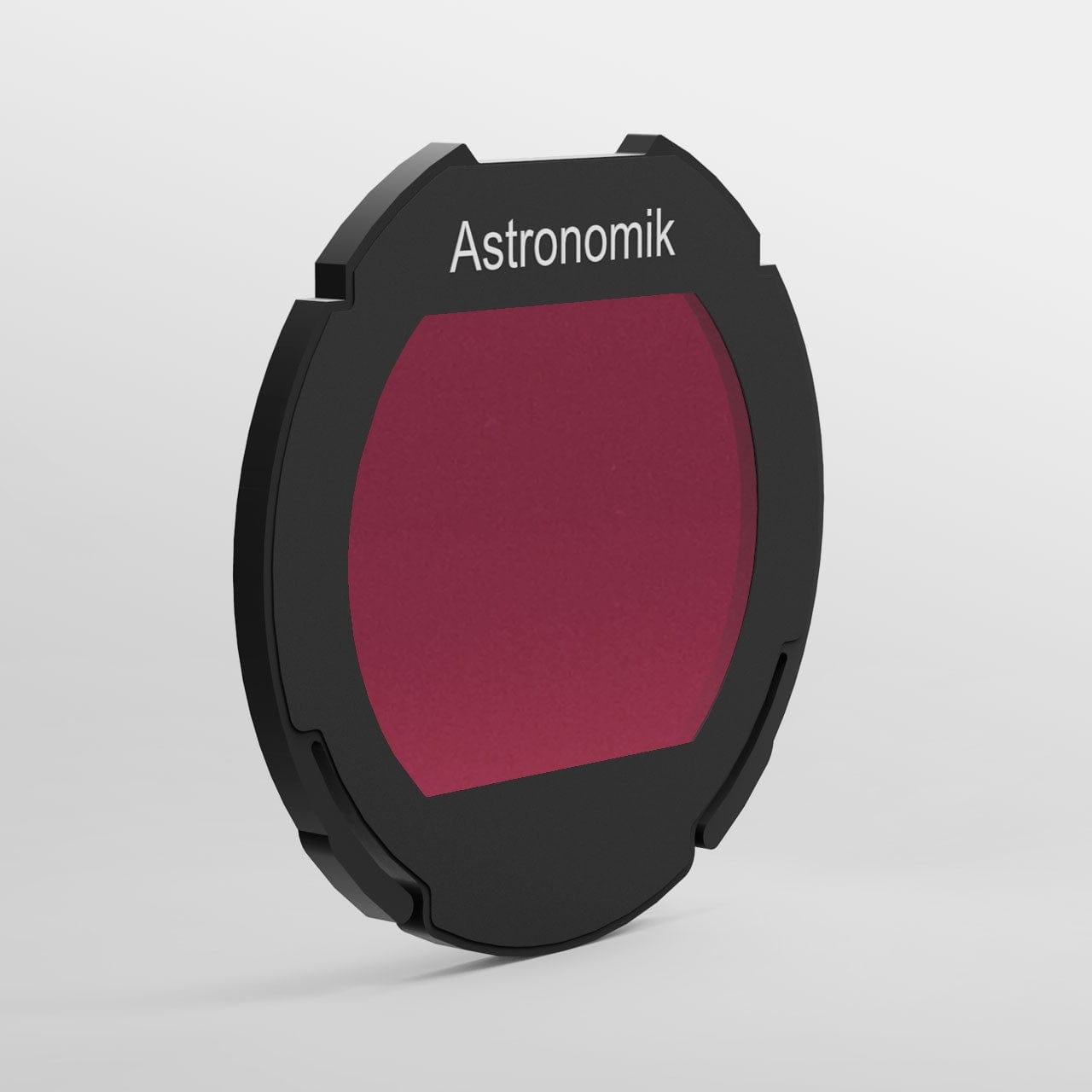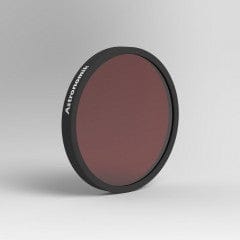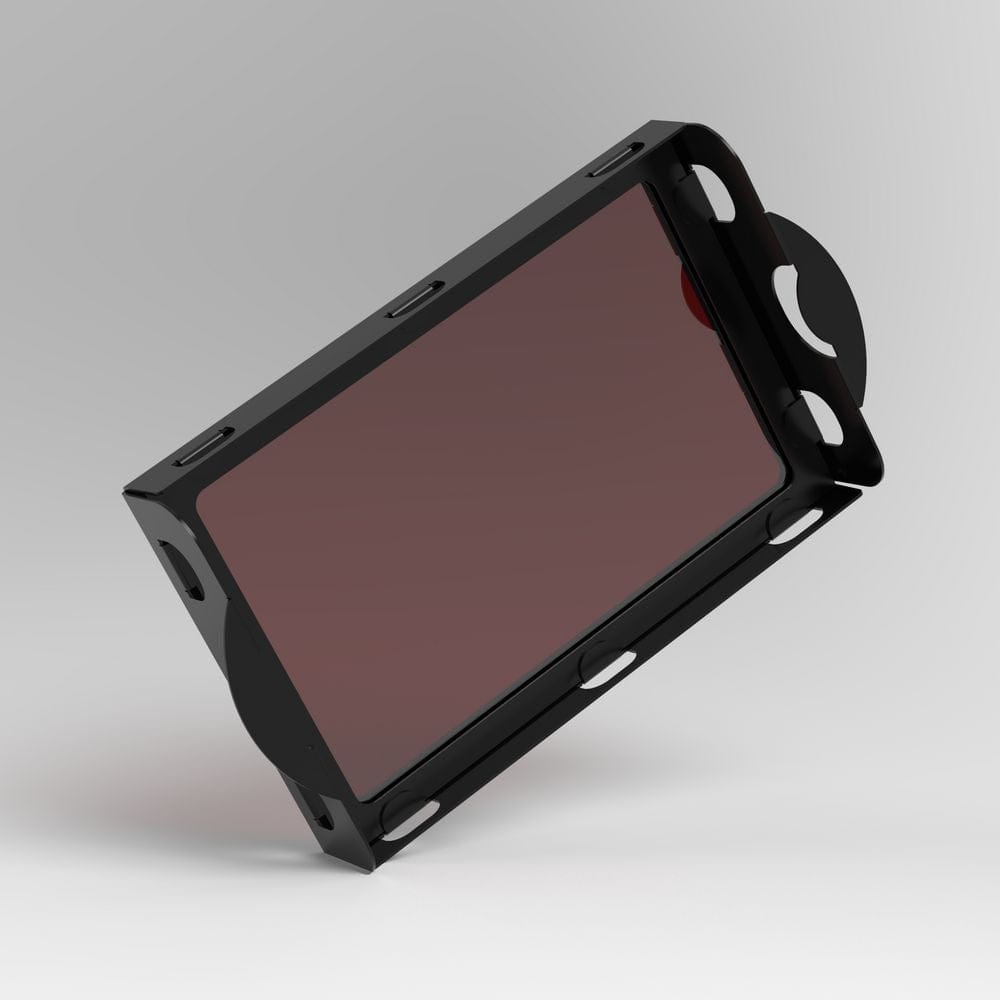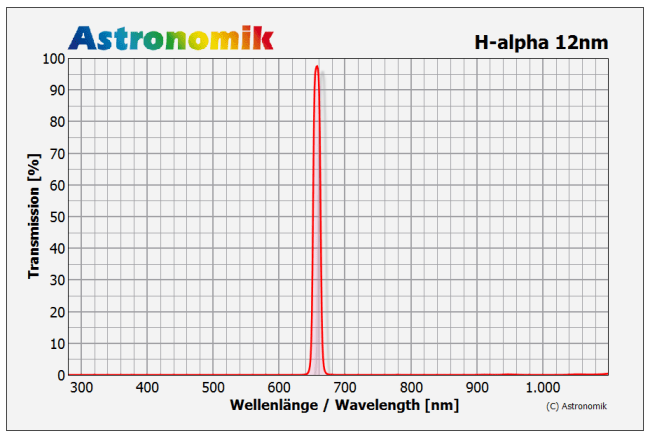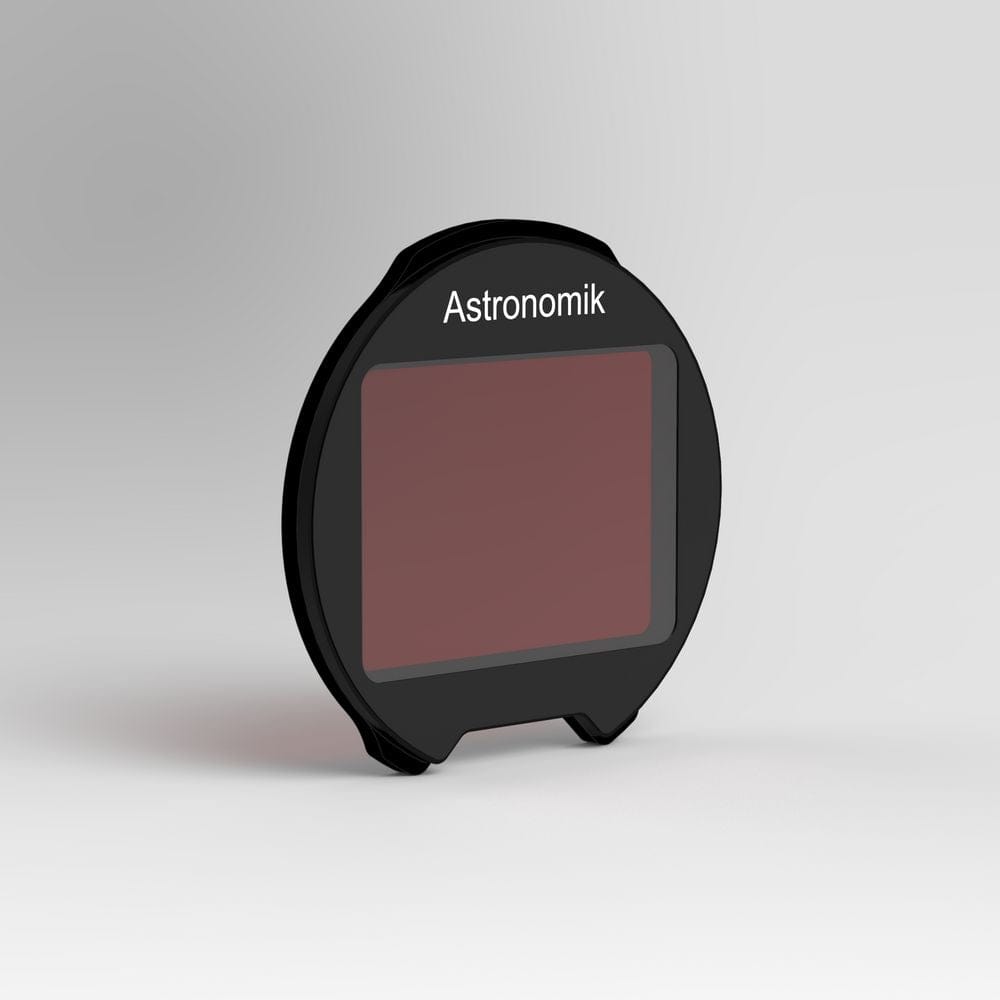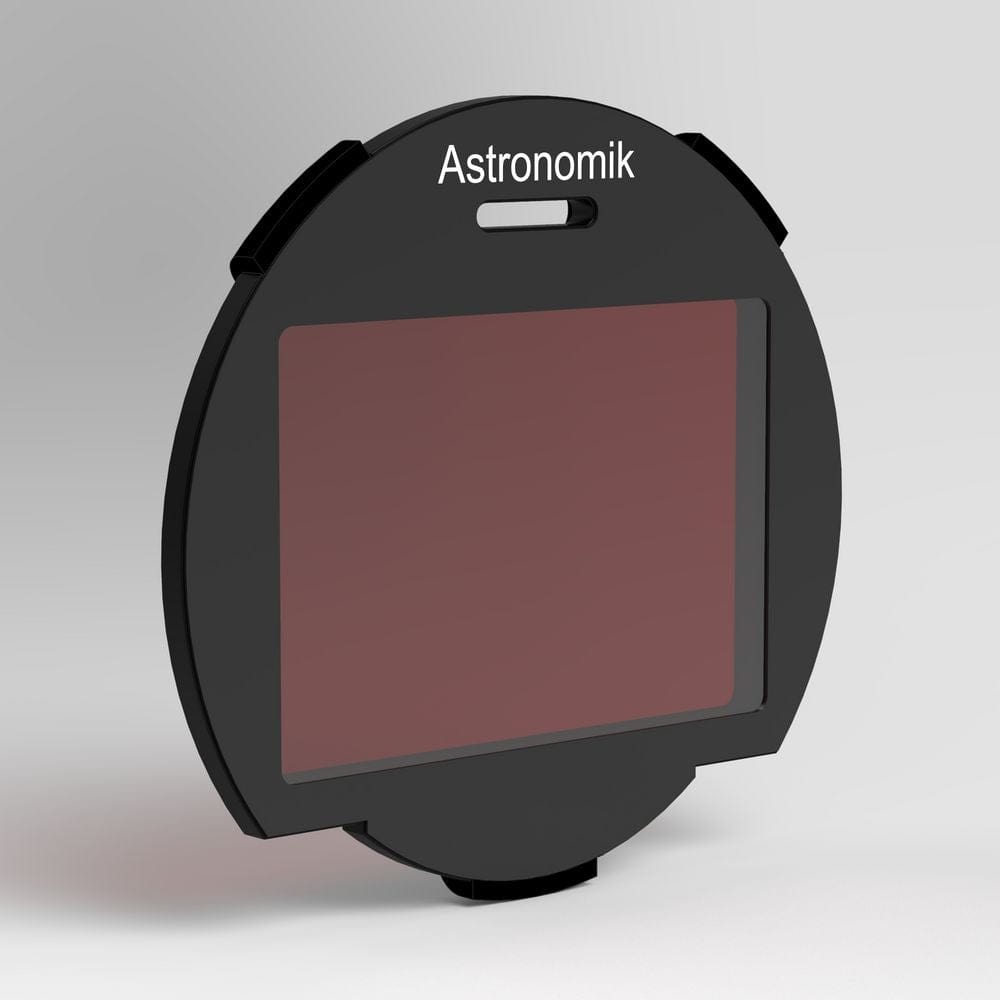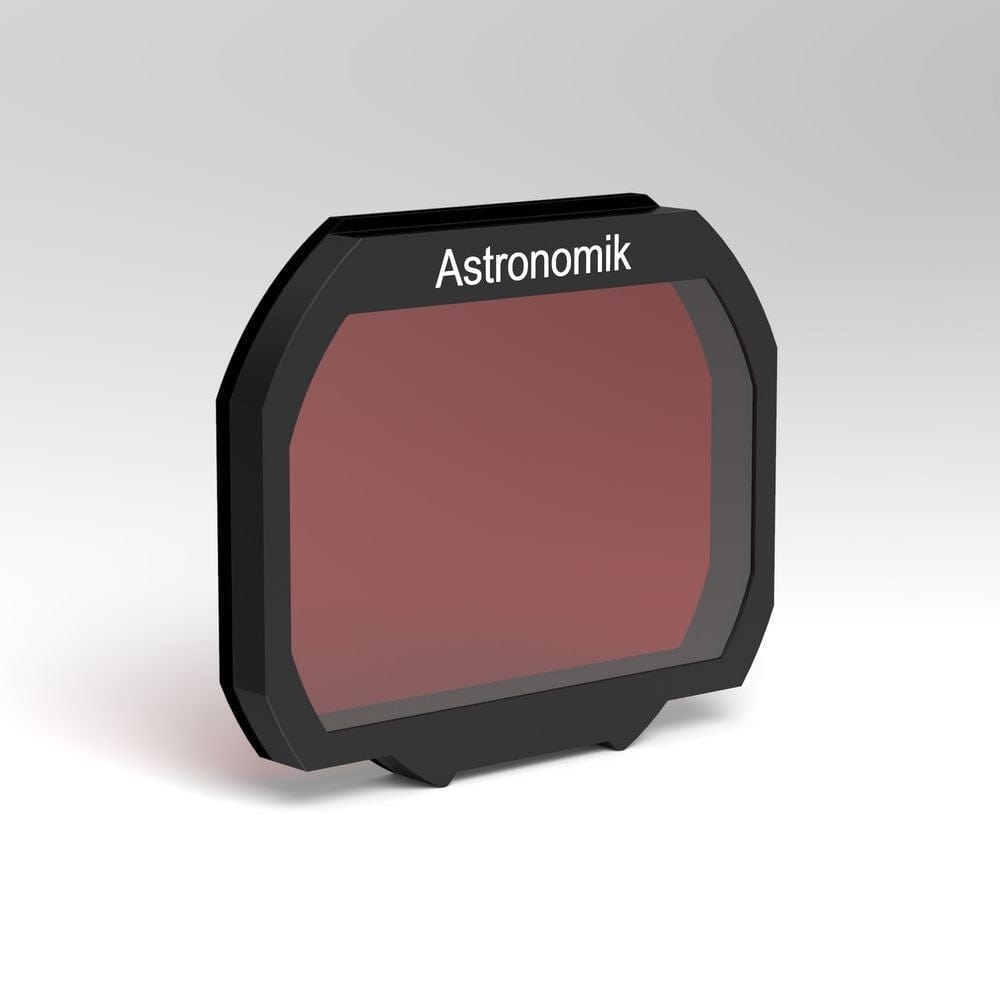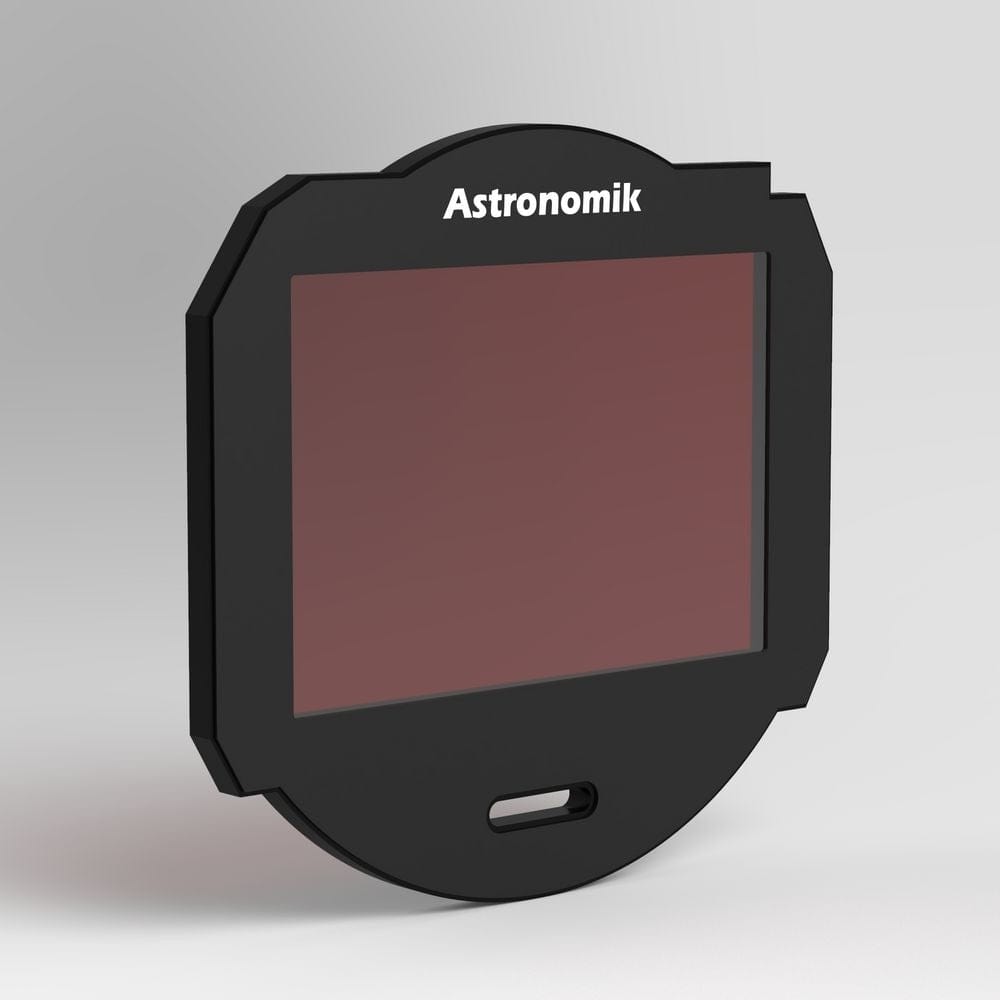Description
The Astronomik H-alpha filter is a narrow band filter for CCD photography. The filter lets the H-alpha light of emission nebulae pass and blocks nearly the whole remainder of the spectrum where the CCD is sensitive.
The full width at half-maximum (FWHM) of 12nm is optimized for the use with common CCD cameras and allows the use of very fast optics. It should be noted that the filter has a transmission of up to 99%. Another advantage of the 12nm filters is the availability of guiding stars for cameras with a built-in-auto guider (SBIG). If you use a very strong filter like our 6nm filter you often won't find a usable guide star. The range of application extends from 1:2.8 to 1:15. Transmission losses and chromatic distortions, which arise with other filters, only occur with Astronomik filters when extremely bright aperture ratios of 1:2 and more come into play.
Main use
The Astronomik H-alpha-CCD (12nm version) increases the contrast between objects, in this case between the H-alpha emission line and the sky glow background. Our Astronomik H-alpha-CCD (12nm version) completely suppresses the emission lines of artificial lighting (mercury (Hg) and sodium (Na)) and sky glow.
Other uses
- When using the OIII CCD and the SII-CCD filters you can obtain three-color images of emission line objects (gas nebulae) from locations with very strong light pollution. To do so, you would take an image in three different wavelengths, select each one as a color-channel in Photoshop and paste them together as a color image.
- The Astronomik H-Alpha filters may NOT be used for solar observation.
- If you plan to create color images from emission line data, our CLS-CCD filter is a great choice for the Luminance channel.
Suitability
- Visual observation (dark skies): Unsuitable
- Visual observation (urban skies): Unsuitable
- Film photography: Reasonable, but very long exposure times
- CCD photography: Very good, huge contrast enhancement at H II-emission nebulae
- DSLR photography (original): Good, reduced sensitivity in the H-alpha band
- DSLR photography (astro modified): Very good, huge contrast enhancement at H II-emission nebulae
- DSLR photography (MC modified): Very good, huge contrast enhancement at H II-emission nebulae
- Webcam / Video (Planets): Unsuitable
- Webcam / Video (Deep Sky): Good, good contrast enhancement with bright objects
Sizes Available From Astronomik - Please ask us if we don't have a price listed for the one you would like
1.25" (M28.5)
2" (M48)
T-thread Cell (M42x0.75)
SC-Cell (2" / 24TPI)
Ø27mm
Ø31mm
Ø36mm
Ø42mm
Ø50mm
50x50mm
EOS APS-C Clip-Filter
EOS XL Clip-Filter
EOS R XL Clip-Filter
Sony alpha Clip-Filter
M52
Specifications
- Typical transmission of more then 95% at the H-alpha line (656nm)
- Complete blocking from all disturbing wavelengths in the infrared
- Par focal with other Astronomik filters
- Glass thickness: 1mm
- Completely resistant against high humidity, scratches and aging effects
- Diffraction limited, the filter will not reduce the optical performance of your telescope!
- Astronomik filters are delivered in a high-quality, long lasting, filter box
- Since 2008 we do ship filters with a completely new design. Any kind of halo or strange reflection is a matter of past
